
Viewing entries in
Photo Of The Day
 Sitting at the intersection of the Harod and Jordan valleys, the nation that controlled Beit She'an controlled all travel through those areas. Consequently, the city changed hands many times throughout history. During the first century, the city was named Scythopolis and was the only city of the Decapolis located west of the Jordan River.
Sitting at the intersection of the Harod and Jordan valleys, the nation that controlled Beit She'an controlled all travel through those areas. Consequently, the city changed hands many times throughout history. During the first century, the city was named Scythopolis and was the only city of the Decapolis located west of the Jordan River.
Are you interested in traveling to Israel? Join me this October for a 12-day Bible Study tour of this beautiful land. See the Israel Tour Page for an itinerary and pricing details.
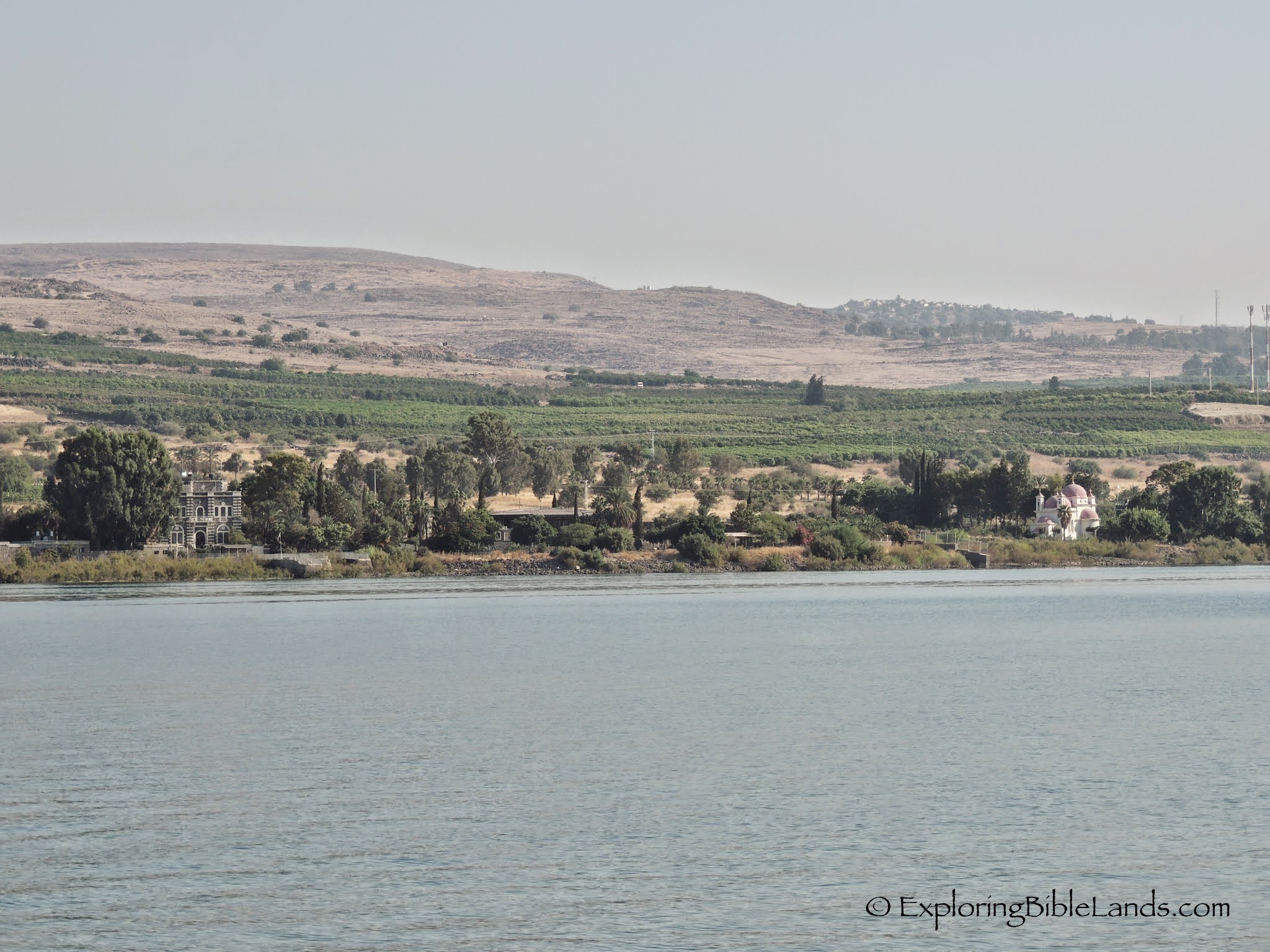 Peter, Andrew, James and John were fishermen before they became apostles of Jesus. Much of their fishing activity that is recorded for us took place around the town of Capernaum. The picture is taken from the Sea of Galilee looking north toward the ruins of that city.
Peter, Andrew, James and John were fishermen before they became apostles of Jesus. Much of their fishing activity that is recorded for us took place around the town of Capernaum. The picture is taken from the Sea of Galilee looking north toward the ruins of that city.
Are you interested in traveling to Israel? Join me this October for a 12-day Bible Study tour of this beautiful land. See the Israel Tour Page for an itinerary and pricing details.
 Between the city of Jerusalem and the Mount of Olives, the Kidron Valley flows from north to south eventually emptying into the Dead Sea. This view from the ancient City of David looks south where the Hinnom Valley merges into the Kidron Valley. The homes on the side of the hill are in the Arab village of Silwan.
Between the city of Jerusalem and the Mount of Olives, the Kidron Valley flows from north to south eventually emptying into the Dead Sea. This view from the ancient City of David looks south where the Hinnom Valley merges into the Kidron Valley. The homes on the side of the hill are in the Arab village of Silwan.
Are you interested in traveling to Israel? Join me this October for a 12-day Bible Study tour of this beautiful land. See the Israel Tour Page for an itinerary and pricing details.
 On the eastern side of the Sea of Galilee, the city of Hippos was one of the cities of the Decapolis. The city was heavily populated for nearly ten centuries. It was abandoned in the 8th century after an earthquake destroyed the city in 749AD.
On the eastern side of the Sea of Galilee, the city of Hippos was one of the cities of the Decapolis. The city was heavily populated for nearly ten centuries. It was abandoned in the 8th century after an earthquake destroyed the city in 749AD.
Are you interested in traveling to Israel? Join me this October for a 12-day Bible Study tour of this beautiful land. See the Israel Tour Page for an itinerary and pricing details.
 In the modern city of Nablus, within the complex of an Eastern Orthodox monastery, sits a well. What makes this well interesting is that (very) long time tradition holds that it is the same well that Jacob dug in Genesis 33. And of course, it is the same well that Jesus sat beside as he spoke to the Samaritan woman. The visible portion of the well has changed many times over the centuries. And of course, for most of its existence, it was outside.
In the modern city of Nablus, within the complex of an Eastern Orthodox monastery, sits a well. What makes this well interesting is that (very) long time tradition holds that it is the same well that Jacob dug in Genesis 33. And of course, it is the same well that Jesus sat beside as he spoke to the Samaritan woman. The visible portion of the well has changed many times over the centuries. And of course, for most of its existence, it was outside.
Are you interested in traveling to Israel? Join me this October for a 12-day Bible Study tour of this beautiful land. See the Israel Tour Page for an itinerary and pricing details.
 After putting mud in his eyes, John 9 tells us that the blind man to go down the Pool of Siloam and wash his eyes. That man would have walked down this Roman road leading down to the area of the Pool of Siloam. In the centuries since then, this road has been buried and buildings have been built on top of it. Only within the past few years have visitors been able to walk upon this road.
After putting mud in his eyes, John 9 tells us that the blind man to go down the Pool of Siloam and wash his eyes. That man would have walked down this Roman road leading down to the area of the Pool of Siloam. In the centuries since then, this road has been buried and buildings have been built on top of it. Only within the past few years have visitors been able to walk upon this road.
Are you interested in traveling to Israel? Join me this October for a 12-day Bible Study tour of this beautiful land. See the Israel Tour Page for an itinerary and pricing details.
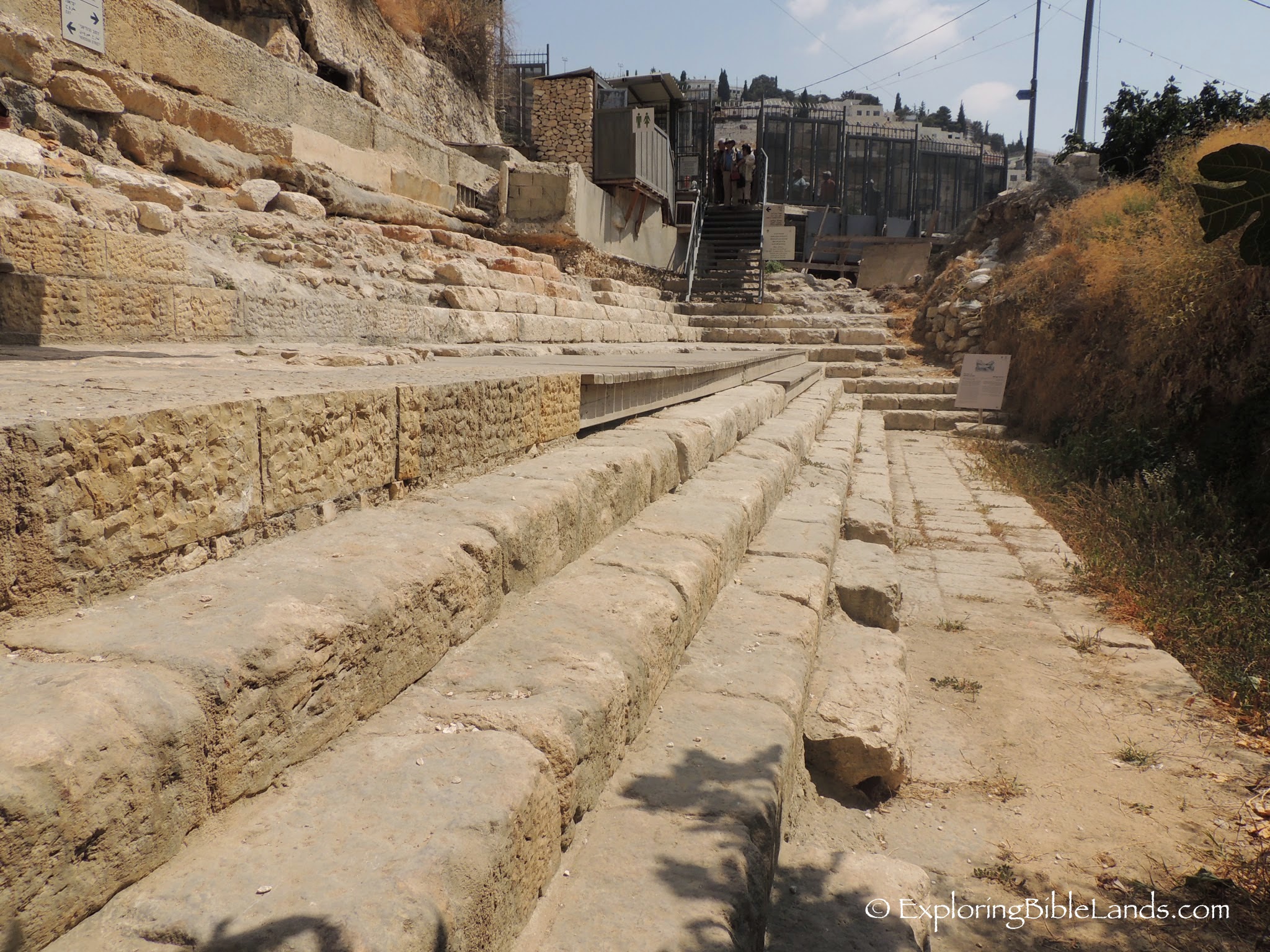 In John 9, we read a wonderful story in the life of Jesus. While walking through Jerusalem, He comes across a blind man. Feeling compassion on the man, Jesus wipes mud on the man's eyes and asks him to go and wash his eyes in the Pool of Siloam. These steps, on the northern edge of the pool, lead down to the water's edge. (Tomorrow, we will post another picture relating to this story.)
In John 9, we read a wonderful story in the life of Jesus. While walking through Jerusalem, He comes across a blind man. Feeling compassion on the man, Jesus wipes mud on the man's eyes and asks him to go and wash his eyes in the Pool of Siloam. These steps, on the northern edge of the pool, lead down to the water's edge. (Tomorrow, we will post another picture relating to this story.)
Are you interested in traveling to Israel? Join me this October for a 12-day Bible Study tour of this beautiful land. See the Israel Tour Page for an itinerary and pricing details.
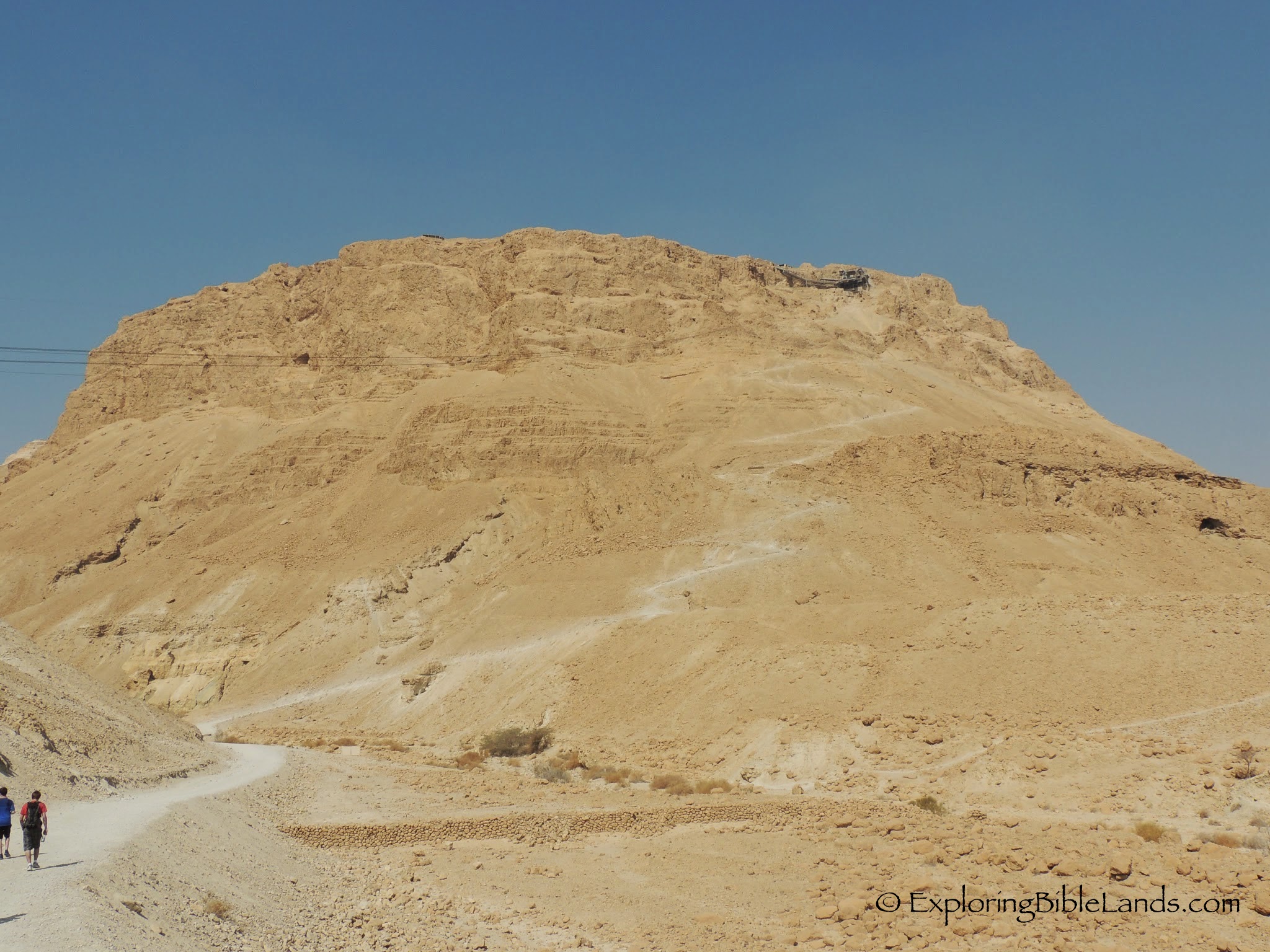 In the first century, King Herod built numerous palaces throughout Judea and Samaria. One of his most famous palaces was built on the top of a standalone plateau on the edge of the Dead Sea. It is commonly called Masada. Today, most visitors ascend to the top in three minutes via cable car. More adventurous visitors can ascend via the ancient Snake Trail.
In the first century, King Herod built numerous palaces throughout Judea and Samaria. One of his most famous palaces was built on the top of a standalone plateau on the edge of the Dead Sea. It is commonly called Masada. Today, most visitors ascend to the top in three minutes via cable car. More adventurous visitors can ascend via the ancient Snake Trail.
Are you interested in traveling to Israel? Join me this October for a 12-day Bible Study tour of this beautiful land. See the Israel Tour Page for an itinerary and pricing details.
 Acts 9 relates the account of Jesus appearing to Saul on the road to Damascus. While traveling around noon, a bright light shined down upon Saul and those that were with him. Jesus spoke to Saul and instructed him to go to Damascus where he would be told what he needed to do. From this overlook on the Israel/Syria border, the city of Damascus lies about 25 miles to our northeast. Depending on the route Saul took, it is possible that he walked very close to here.
Acts 9 relates the account of Jesus appearing to Saul on the road to Damascus. While traveling around noon, a bright light shined down upon Saul and those that were with him. Jesus spoke to Saul and instructed him to go to Damascus where he would be told what he needed to do. From this overlook on the Israel/Syria border, the city of Damascus lies about 25 miles to our northeast. Depending on the route Saul took, it is possible that he walked very close to here.
Are you interested in traveling to Israel? Join me this October for a 12-day Bible Study tour of this beautiful land. See the Israel Tour Page for an itinerary and pricing details.
 The Tristram’s starling is a common feature in the Judaean Hill Country. It was first discovered by Reverend Henry Tristram during an ornithological study in Israel in 1863. This lovely male, with his distinctive rust-color stripe overlooks the Dead Sea from the walls of Masada. Here, their piping calls remind over-hot visitors that if other creatures can survive the heat, they can, too.
The Tristram’s starling is a common feature in the Judaean Hill Country. It was first discovered by Reverend Henry Tristram during an ornithological study in Israel in 1863. This lovely male, with his distinctive rust-color stripe overlooks the Dead Sea from the walls of Masada. Here, their piping calls remind over-hot visitors that if other creatures can survive the heat, they can, too.
 The site of Tel Qasile was Philistine city built at the mouth of the Yarkon River in modern Tel Aviv. A series of Philistine temples were found here, built on top of each other over the years. Most notable in the design are the columns and the large stone threshold. The temple and much of the city was finally destroyed by fire sometime around the 10th century.
The site of Tel Qasile was Philistine city built at the mouth of the Yarkon River in modern Tel Aviv. A series of Philistine temples were found here, built on top of each other over the years. Most notable in the design are the columns and the large stone threshold. The temple and much of the city was finally destroyed by fire sometime around the 10th century.
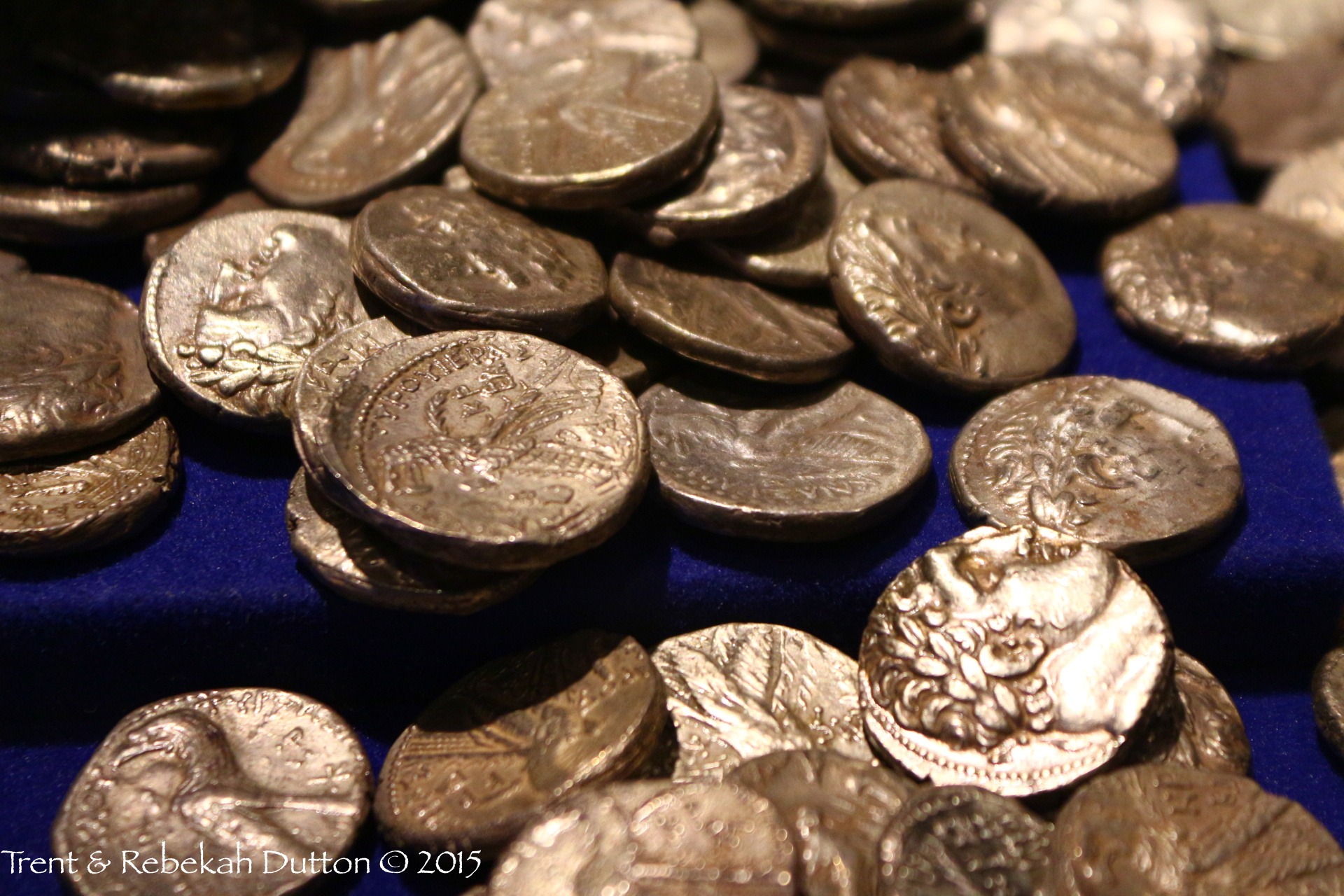 The Tyrian Shekel (or Tyrian tetradrachma) was the coin used in the first century to pay the Jewish temple tax. These coins were actually minted in Israel after Rome shut down the mint in Tyre, though the imagery was required to stay the same—the representation of a Tyrian god and an eagle. Money changers in and around the temple would likely have been exchanging common currency for these coins.
The Tyrian Shekel (or Tyrian tetradrachma) was the coin used in the first century to pay the Jewish temple tax. These coins were actually minted in Israel after Rome shut down the mint in Tyre, though the imagery was required to stay the same—the representation of a Tyrian god and an eagle. Money changers in and around the temple would likely have been exchanging common currency for these coins.
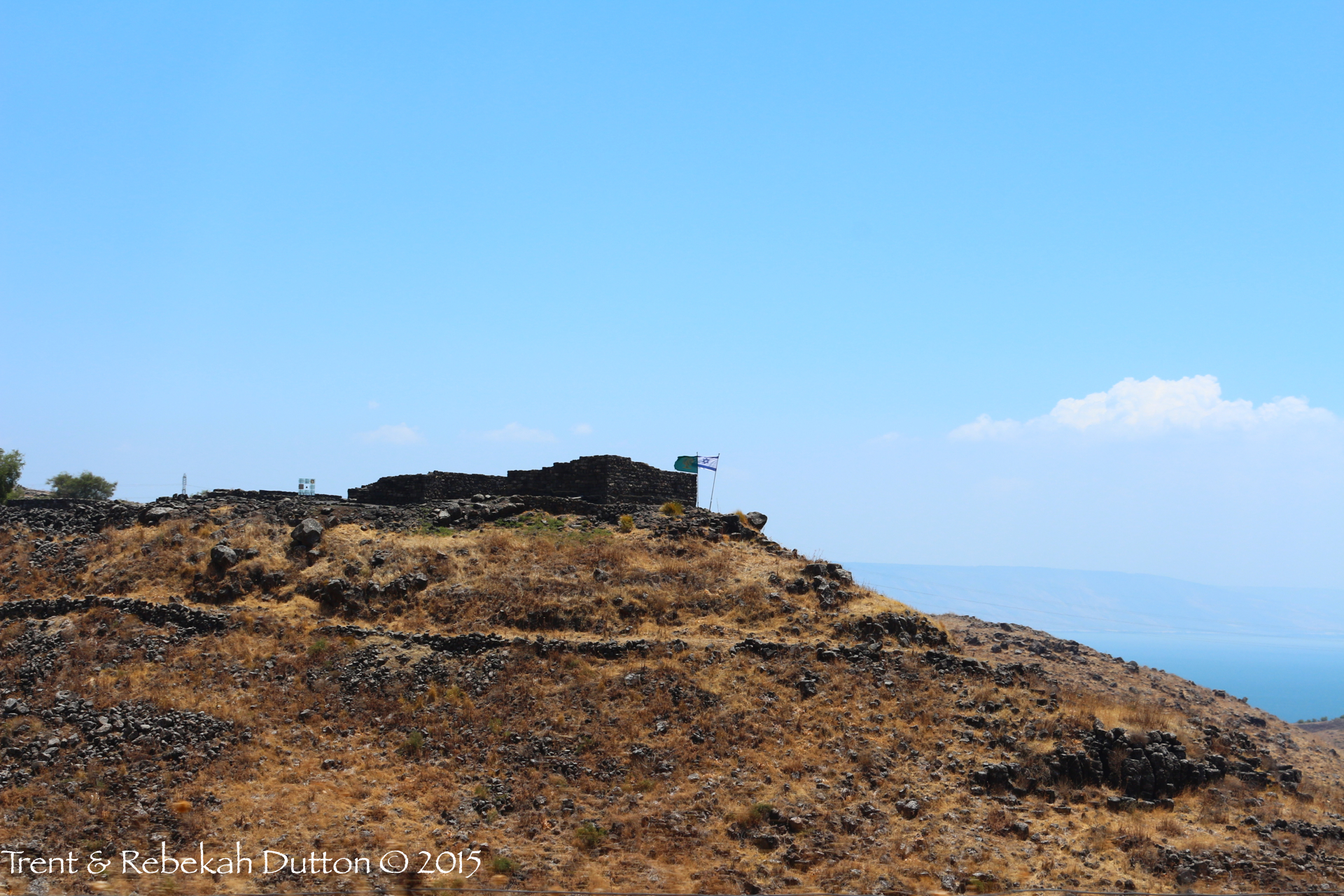 The first-century remains of ancient Chorazin (modern Kerazeh) overlook the Sea of Galilee. This is a particularly striking city, built of black basalt, which creates an ominous mood as one walks through the crumbling ruins. Chorazin was mentioned as one of the three cities upon which Christ pronounced the woes of Matthew 11:20-21.
The first-century remains of ancient Chorazin (modern Kerazeh) overlook the Sea of Galilee. This is a particularly striking city, built of black basalt, which creates an ominous mood as one walks through the crumbling ruins. Chorazin was mentioned as one of the three cities upon which Christ pronounced the woes of Matthew 11:20-21.
 This view of the iconic Jerusalem skyline is a staple to many a postcard vendor. However, panning out a bit outside the Ottoman-era walls reveals two important locations. First is the Temple Mount which today features the Al-Aqsa mosque and the Dome of the Rock. And, across the street from the Temple Mount and slightly beneath the brilliant blue rooftop is the Iron Age City of David—the original Jerusalem. This small mound was protected on all sides from approach, except from the north, where an enemy could approach unseen down the ridgeline. Thus, the Temple Mount not only served as a holy place, but also as fortified protection from hostile forces from the north.
This view of the iconic Jerusalem skyline is a staple to many a postcard vendor. However, panning out a bit outside the Ottoman-era walls reveals two important locations. First is the Temple Mount which today features the Al-Aqsa mosque and the Dome of the Rock. And, across the street from the Temple Mount and slightly beneath the brilliant blue rooftop is the Iron Age City of David—the original Jerusalem. This small mound was protected on all sides from approach, except from the north, where an enemy could approach unseen down the ridgeline. Thus, the Temple Mount not only served as a holy place, but also as fortified protection from hostile forces from the north.
 One night, in the city of Timnah in the Sorek Valley, Philistine men impudently answered Sampson’s riddle with the words: “What is sweeter than honey?” Today, that answer is still true, and bees still thrive in the Sorek Valley, just a few meters from the ancient site of Timnah. Luckily, however, their keepers have found more hospitable housing for them than the carcass of a lion.
One night, in the city of Timnah in the Sorek Valley, Philistine men impudently answered Sampson’s riddle with the words: “What is sweeter than honey?” Today, that answer is still true, and bees still thrive in the Sorek Valley, just a few meters from the ancient site of Timnah. Luckily, however, their keepers have found more hospitable housing for them than the carcass of a lion.
 As Hezekiah prepared for Sennacherib’s approach at the end of the 8th century, he knew the city would need water supplies to survive the inevitable siege. II Kings 20:20 notes his solution, which is evident today in the engineering marvel called Hezekiah’s Tunnel (or, Siloam Tunnel). The tunnel is 533 m long with a 0.6% gradient from the mouth of the Gihon Spring to the Pool of Siloam, where it empties.
As Hezekiah prepared for Sennacherib’s approach at the end of the 8th century, he knew the city would need water supplies to survive the inevitable siege. II Kings 20:20 notes his solution, which is evident today in the engineering marvel called Hezekiah’s Tunnel (or, Siloam Tunnel). The tunnel is 533 m long with a 0.6% gradient from the mouth of the Gihon Spring to the Pool of Siloam, where it empties.
 The first-century ossuary was an oblong box, usually carved out of softened limestone for the purpose of storing the bones of the dead, which had lain in a tomb for a year. Though many were plain, or featured a simple geometric design, this particular example is extraordinarily elaborate in its decoration. The reasoning for this may be found in the starkly crude letters carved into the side, which call to mind Matthew 26:3: “Joseph, son of Caiaphus.”
The first-century ossuary was an oblong box, usually carved out of softened limestone for the purpose of storing the bones of the dead, which had lain in a tomb for a year. Though many were plain, or featured a simple geometric design, this particular example is extraordinarily elaborate in its decoration. The reasoning for this may be found in the starkly crude letters carved into the side, which call to mind Matthew 26:3: “Joseph, son of Caiaphus.”
 In I Samuel 17, the Philistine armies have gathered at Socoh, and are encamped between Socoh and Azekah. Across the Elah Valley, were the Israelites, with a river between them and their enemies. To the left of this photo is Socoh with Azekah rising at the end of the valley. To the right is the site of Khirbet Qeiyafa, the possible location of the Israelite camp.
In I Samuel 17, the Philistine armies have gathered at Socoh, and are encamped between Socoh and Azekah. Across the Elah Valley, were the Israelites, with a river between them and their enemies. To the left of this photo is Socoh with Azekah rising at the end of the valley. To the right is the site of Khirbet Qeiyafa, the possible location of the Israelite camp.
 We often read of dutiful children in the Biblical narrative, such as girls like Rebekah and Rachel drawing water, Samuel ministering in the Tabernacle, or David tending the family flocks. Middle Eastern children today still often contribute to their family’s upkeep by selling small items and carrying merchandise, like this fresh bread, to family-owned shops in the souq.
We often read of dutiful children in the Biblical narrative, such as girls like Rebekah and Rachel drawing water, Samuel ministering in the Tabernacle, or David tending the family flocks. Middle Eastern children today still often contribute to their family’s upkeep by selling small items and carrying merchandise, like this fresh bread, to family-owned shops in the souq.